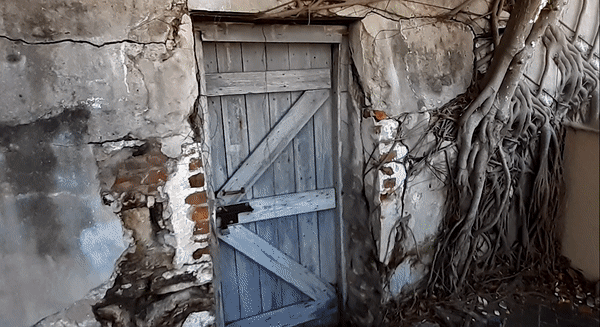“These are the animals which you may eat: the ox, the sheep, the goat …” – Deuteronomy 14:4
The most profound truth ever revealed to me by the Holy Spirit as an already saved and justified Christian was the centrality of the so-called “two house teaching” to Bible history and prophecy. I summarized it in my article “The Most Important Forgotten Truth of the Bible” and wrote my theology textbook “The Prodigal Son Prophecy” to explain it in detail from the Hebrew cultural perspective of the Apostles and the Prophets.
One central aspect of the two house reality is that Christians and Jews are separate but equal cohorts destined to accept Christ and live in harmony together during the Millennial Kingdom before spending eternity in Heaven with the Father. That’s the hidden underlying message of the Parable of the Prodigal Son explained in my summary.
Importantly, Christians (including many individual ethnic Jews) gain eternal salvation through the First Advent of Christ, while Jews (collectively) and a “mixed multitude” of second-chancers gain salvation through the Second Advent, when God says, “I will pour out on the house of David and on the people of Jerusalem a spirit of grace and prayer, and they will look on Me, the One they have pierced. They will mourn for Him as one mourns for an only child, and grieve bitterly for Him as one grieves for a firstborn son” (Zechariah 12:10), an event that can only occur, Paul adds, when “the fullness of the Gentiles has come in” (Romans 11:25). Paul offers a full treatise on this theme in Romans. Romans 9-11 could stand alone as its own book on the topic (as could chapters 1-8 on the topic of systematic theology).
The Bible teaches the two house reality clearly and plainly for those with eyes to see. A simple pure-Scripture introduction to it is spelled out in Hosea 1-14, Jeremiah 3 and Ezekiel 37 when read in sequence with a Bible literalist perspective.
Symbols and patterns throughout the Bible reinforce the two house reality in amazing ways, including the repeated pairing of symbols: for example, the (10 tribe) House of Israel symbolized as the “vine” (Genesis 49:22; Isaiah 5:3, 7) and the House of Judah (two tribes plus the Levites) as the “fig tree” (Jeremiah 24). The harmony of the two houses is shown by the pairing of these symbols in Bible history in 1 Kings 4:25, “So Judah and Israel lived in safety, every man under his vine and his fig tree” and, in the millennial context, in Zechariah 3:9-10 and Micah 4:1-4.
More relevant as we celebrate Easter/Passover is the pairing of the symbols of the sheep and goats – which, with the ox, lead the list of “clean” animals in Deuteronomy 14:4. Sheep are a symbol of the House of Israel and goats are a symbol of the House of Judah.
Don’t just look at the Passover story to see this, but look at the larger pattern of the resurrection theme in the Bible. The following is from “The Prodigal Son Prophecy”:
“There are three iterations with several common elements in each: a father, a firstborn son, the sacrifice of a lamb, and an object on which the sacrifice was given effect.
“Genesis 22:1-13. The first iteration of this biblical pattern was the near-sacrifice of Isaac by Abraham. Abraham was the father ready to sacrifice his firstborn son on the command of God. At the last moment God Himself provided a substitutionary sacrifice in the form of a sheep. The sheep, instead of Isaac, had his blood shed upon an altar. “By faith Abraham, when he was tested, offered up Isaac on the altar. He who had received the promises was ready to offer his one and only son, even though God had said to him, ‘Through Isaac your offspring will be reckoned.’ Abraham reasoned that God could raise the dead, and in a sense, he did receive Isaac back from death” (Hebrews 11:17-19).
“Exodus 12:1-13. The second iteration of the Passover pattern is found in Exodus 12. All the firstborn males of the land were to be killed by God (as punishment for Pharaoh’s slaughter of the firstborn of the Hebrews during the infancy of Moses.) “Every firstborn son in Egypt will die, from the firstborn son of Pharaoh, who sits on the throne, to the firstborn son of the female slave, who is at her hand mill, and all the firstborn of the cattle as well” (Exodus 11:5). Only those households displaying the blood of a sacrificial lamb on the lintels and doorposts of their homes were spared.
“The father figure is Pharaoh, and his firstborn son is the first to suffer God’s wrath. The sheep is a one-year-old male. The object on which the sacrificial blood is given effect is the door frame of the house.
“The Gospels. The third iteration is found in each of the four gospels, in the story of the crucifixion of Christ, which occurred, literally, on Passover, immediately preceding the first day of the Feast of Unleavened Bread (Leviticus 23:4-6). “Clean out the old leaven so that you may be a new lump, just as you are in fact unleavened. For Christ our Passover also has been sacrificed” (1 Corinthians 5:7).
“The Passover pattern was completed in the sacrifice of Jesus on the cross. God the Father gave His only son (John 3:16). The Father is God. The son is Christ. The lamb is Christ. The object on which His shed blood was given effect was the cross.” [End excerpt.]
Now consider the most significant way the symbol of the goat is associated with the House of Judah. While (except for Passover) sheep and goats are virtually interchangeable in ritual sacrifice under the Mosiac law – only goats (two of them) are designated for the Day of Atonement when the Levitical high priest of the House of Judah enters the Holy of Holies annually with the blood of one goat, to atone for the sins of the people, while the other, the “scapegoat,” carries the sins of the people out into the wilderness. The use of the goat was continued by the House of Judah after Christ had brought salvation to the “Lost sheep of the House of Israel” and remains mandatory for Jews under the Law of Moses – UNTIL the “Day of Atonement” becomes the key event of the SECOND Advent of Christ when he “touches down” to the Mount of Olives per Zechariah 14, with the Host of Heaven (glorified believers among them) at His back (Revelation 19:11-21.)
But importantly, those who choose to remain “goats” in the Millennial Kingdom – instead of joining the Messiah’s sheepfold, where all His followers are united under “Shiloh” (Genesis 49:10) as the single 12-Tribe-plus-former-Gentiles House of Israel – are cast from His presence per Matthew 25:31-41.
Bottom line: Passover/Resurrection Day is only half the story of salvation, awaiting the second coming of Christ to complete the reunification promised by God in numerous passages of Old Testament prophecy.
Postscript: I cited Deuteronomy 14:4 in part to introduce a fascinating interpretation of it by Rabbi Menachem Feldman titled “The Secret Symbolism of the Calf and Goat,” with heavy (but perhaps unintentional) two house overtones – in which (pre-Moses) the goat becomes the symbol of Judah because he was the brother of Joseph (patriarch of the House of Israel) who orchestrated his sale into slavery, after which the brothers faked a story of his death for their father Jacob by smearing the blood of a goat on his coat of many colors.



